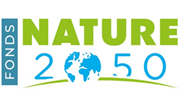FL#6 - "Grand Est" (France)
This page is also available in French ![]()

Location
The follower site, the Grand Est region, is connected to the demonstration site 6 (Vienne River). The Grand Est region is located in the northeast of France, bordering Belgium, Luxembourg, Germany and Switzerland. It concerns a large and diverse territory with rural/agricultural area as well urban and industrial areas. This region is part of the continental biogeographical region. As part of NATALIE, several sites will be identified in the region. The total Grand Est region covers 57,441 km² divided in 10 departments.

Description of the area
The Grand Est region has a very wide diversity of natural environments and landscapes, ranging from forestry, agriculture (from open fields to bocage), plains and mountains. This exceptional environmental diversity is the consequence of geology and the multiple climatic influences of the territory. It is one of the only continental French regions. Agriculture (viticulture) occupies almost 3 million hectares (59.3% of the region). The Grand Est region is a real crossroads located at the intersection of several large mountain ranges (Vosges, Jura) and vast limestone and clay-marl plateaus, crossed by large rivers (Rhine, Meuse, Moselle, Marne), with connections to neighboring regions and countries (Switzerland, Germany, Luxembourg, etc.). This contributes to the ecological diversity of the region, but also increases the threats to biodiversity as anthropogenic pressures such as artificialization of land, environment fragmentation and diffuse pollution have a significant effect on the region's natural heritage (erosion of biodiversity).

Climatic Challenges
Climate changes weigh on the region's biodiversity, with notable impacts on the conservation of environments, the health of ecosystems and species richness. Various examples of impacts of climate change observed include:
- Increasing average temperatures, impacting floristic assemblages and phenology, proliferation of invasive species, increasing the urban heat island effect, …
- Increased flood risks (20% of the built-up area is in a flood risk zone), clay shrink/swell damage (46,5% of the built-up area in a risk zone), late frosts, spring flooding,
- Water resources challenges:
- More severe low-water levels from spring onwards, with critical thresholds in late summer and early autumn; late and intense flooding with impacts on water quality and ability to infiltrate and store it in water tables,
- Major uncertainties about the possibility to fill reservoir lakes in the event of a succession of dry years,
- An increase in the average temperature of lake and river waters, with a consequent impact on water quality (particularly the proliferation of algae),
- Agricultural and forestry sectors are suffering from lack of water due to water resources depletion, dry soils and invasive species and diseases proliferation,
- Biodiversity: the region is in a transitional period, with biodiversity in decline and environments occupied by an ever-decreasing number of dynamic new species,
- Pollution: important road traffic, coal-fired power stations and agricultural pollution effects are increased by the meteorological condition changes.

Planned activities
The intensity of the water related challenges will depend on the ability to:
- Encourage infiltration of groundwater in winter and spring, when rainfall is at its highest, so that groundwater can play its role in supporting the water table and the water tables can play their role of support in summer and autumn,
- Structure the necessary water savings through a collective, supportive and anticipatory approach.
The main goal of FL#6 is to help creating an engaged community of stakeholders in the Grand Est Region to link biodiversity, climate change adaptation and socioeconomical challenges (forestry, agriculture and champagne, …). NAT2050 is already working with several local stakeholders and is funding some projects in the Grand Est region (see: La carte des réalisations Nature 2050 for more details).
The Grand Est Region is already working on biodiversity challenges with the Life Biodiv’Est Project. FL#6 aims to support the Biodiv’Est project and other biodiversity initiatives in the Region and complement them with knowledge from NATALIE partners and its capacity to mobilize public and private actors to help create and fund local projects. In the long term, some economic systems will have to shift their practices in order to adapt to future climate, hopefully by using biodiversity restoration.
Specific Follower Site actions to be implemented: No NBS project implementation will be done by FL#6 itself. The aim is to help local actors design and implement projects themselves and create new socioeconomics models using biodiversity-positive actions.

Ambition
Ambition during the project
The ambition is to demonstrate the effectiveness of the three NBS types implemented within DS#6 in improving the resilience of aquatic ecosystems, particularly water flow and water quality using evidence-based knowledge.
Ambition after the project
Because wetlands restoration can be a very long process, improvements on hydrology should continue beyond the lifetime of the project. Furthermore, it is expected that the NATALIE NBS will be examples that will be followed by local stakeholders at a larger scale and temporality. Every project integrated to the Nature 2050 programme will benefit from indicatores monitoring until 2050.

Involved partners
